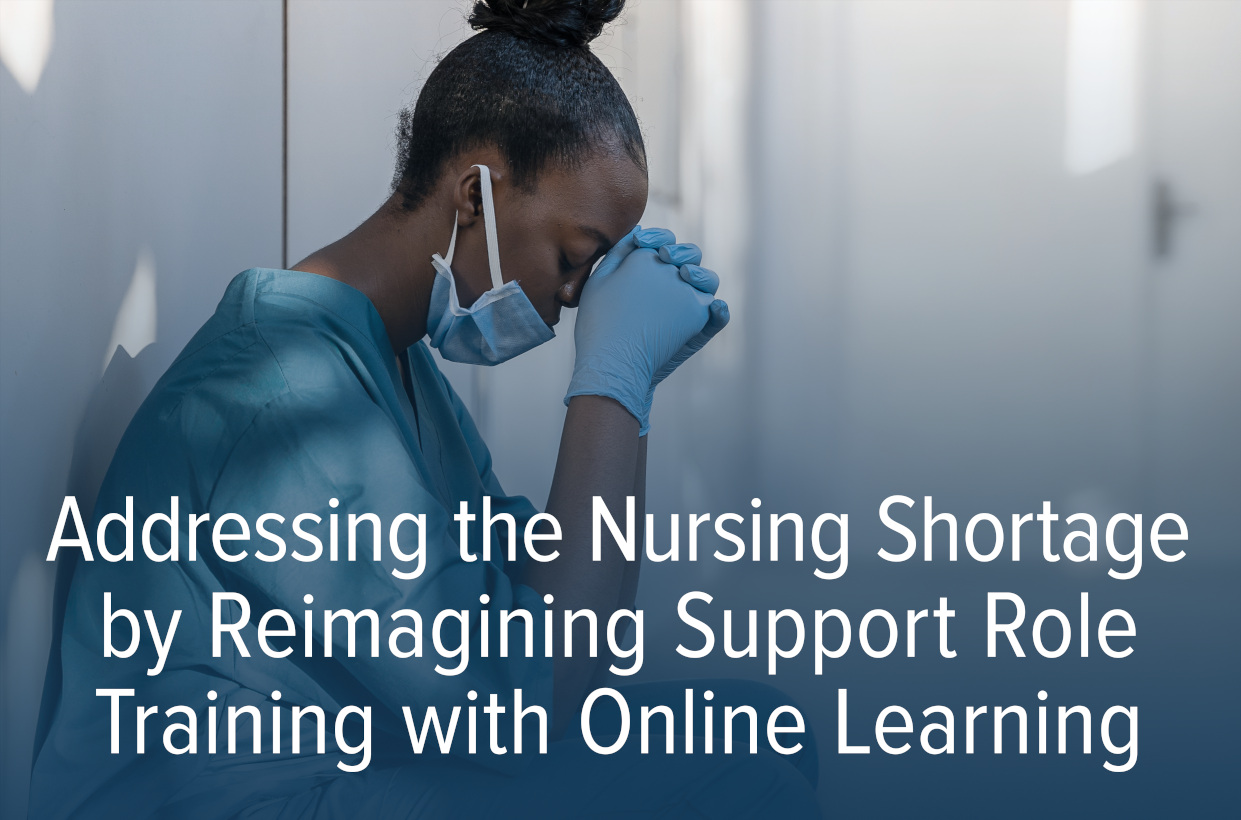
The Nursing Shortage and Filling the Gaps
As much as hospitals and health systems may fear the implications of the word “burnout,” their peers are right along with them — no one is immune to the devastating ripple effects of the pandemic. And the widespread result of healthcare worker burnout — among other factors such as increased demand for healthcare services — has created a staff shortage, particularly at the nursing level. This shortage has been exacerbated by the lack of incoming nurses (the United States would need to more than double the number of new graduates entering and staying in the workforce for the next three years straight to accommodate the existing gap). Feeling the pressure of a nursing gap this large, over 300 hospital CEOs ranked personnel shortages as their number-one concern in 2021, with 94 percent ranking the registered nurses deficit as the most pressing category.
Most importantly, this shortage is leaving a major gap in patient care and the situation is becoming increasingly urgent. Will this be the catalyst health systems need to get innovative and reimagine clinical education and develop new care delivery models to reduce workload burden?
Benefits of online learning for workforce development
Modern problems require modern solutions, and hospitals are discovering that online learning can be a faster and more effective way to develop more nursing support roles as solution to address the staffing shortage. Prioritizing nursing support roles enables health systems to develop candidates with little to no healthcare experience, but who are interested in the field. With online learning, hospitals can train candidates efficiently, getting care providers on the floor faster and better prepared to provide top-notch patient care. For example, UCHealth took a creative approach with their care model innovations and developed courseware to rapidly grow their Patient Care Assistant program, supporting their nursing personnel and diversifying their workforce.
Hospitals across the country embrace online learning as part of a blended learning program to make training accessible to more candidates but maintain a positive and effective learning experience. This approach allows for more personalized pathways, making it easier for learners to balance work and education. Here are the benefits to using online learning for both health systems and learners to train nursing support staff:
Flexible for learners with different backgrounds
Health systems are finding that care models that disproportionately rely on registered nurses (RNs) are no longer sustainable. Online learning offers flexibility that allows them to meet the diverse needs of candidates who are interested in the healthcare space but may not have experience, English isn’t their first language, are balancing responsibilities, or who struggled in traditional learning settings.
The learning experience is personalized
Online learning with adaptive functionality creates a more personalized learning experience than traditional learning. Adaptive learning platforms can modify the content and pace of learning to the individual learner’s needs and skill level. This can help to ensure that the learning is more effective and engaging — this often results in higher learner satisfaction levels, too.
Faster than traditional learning
When learning is tailored to individuals and their own knowledge levels, online learning via an adaptive platform is faster than traditional learning because it only focuses on what they need to know. Hospitals can train nursing support staff efficiently, getting them on the floor faster — which is crucial in addressing staffing shortages.
Learner data enriches in-person instruction and clinical practice sessions
Additionally, in-person instruction and clinical practice sessions can be enriched by the learner data captured by the online learning system. This data identifies areas of strength and weakness, allowing for more targeted training. Insights collected during online learning are useful for instructors leading hands-on training and clinical sessions.
The pressures of the nursing shortage will not be easing up any time soon. However, online learning has emerged as a practical solution to address the staffing gap by providing personalized, efficient, and flexible training for nursing support staff. The benefits of online learning not only help develop the workforce that enables new care delivery models, but also have the potential to improve the quality of patient care by leveraging learner data to enrich in-person instruction and clinical practice sessions. As healthcare continues to evolve, innovative care models and blended training supported by online learning will play a crucial role in meeting the workforce development needs of the industry and ensuring excellent patient care.
From the beginning, Amplifire has relied on innovative brain science to guide its product development to create the most effective learning and training solution, perfectly tailored to the way the human brain works. Learn more about how Amplifire helps people learn better and faster with online learning by requesting a demo.







